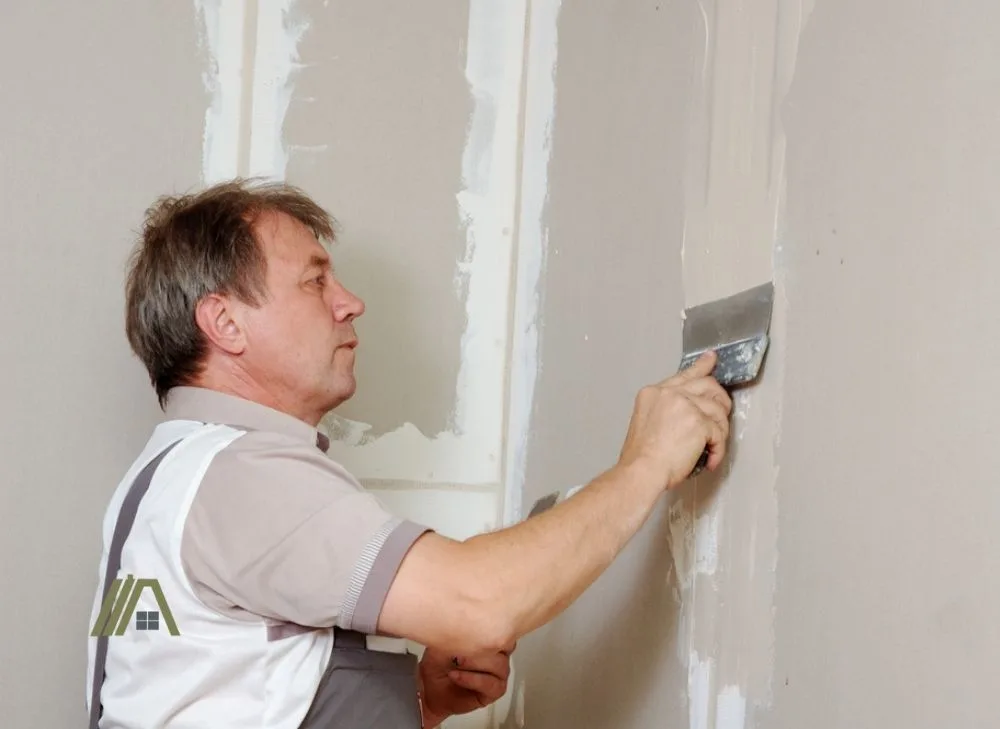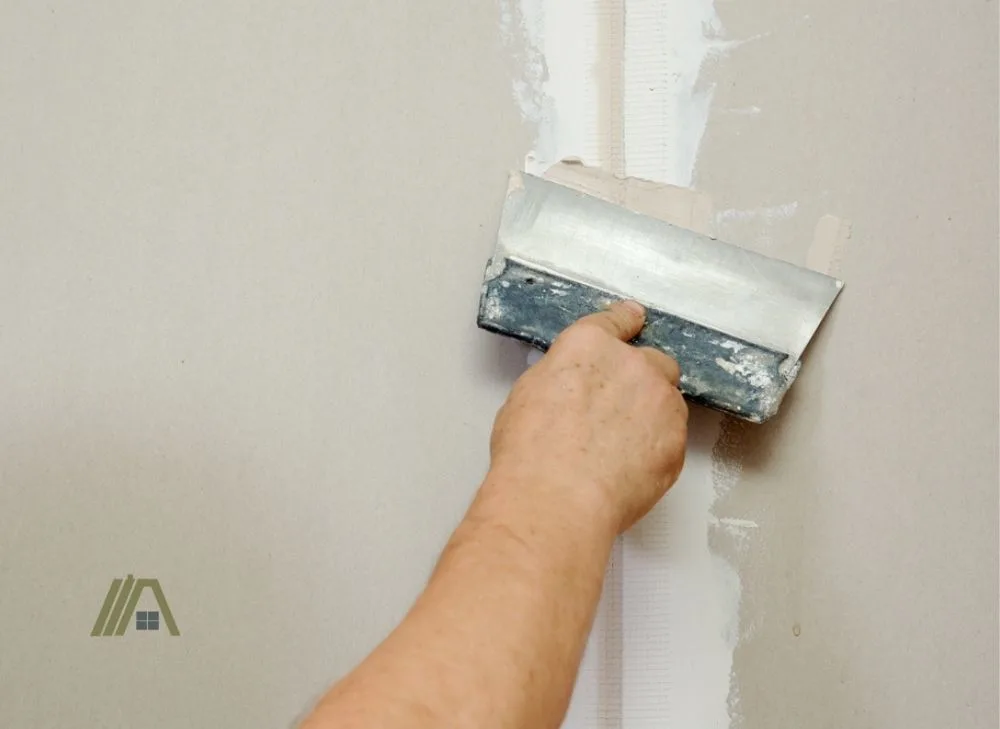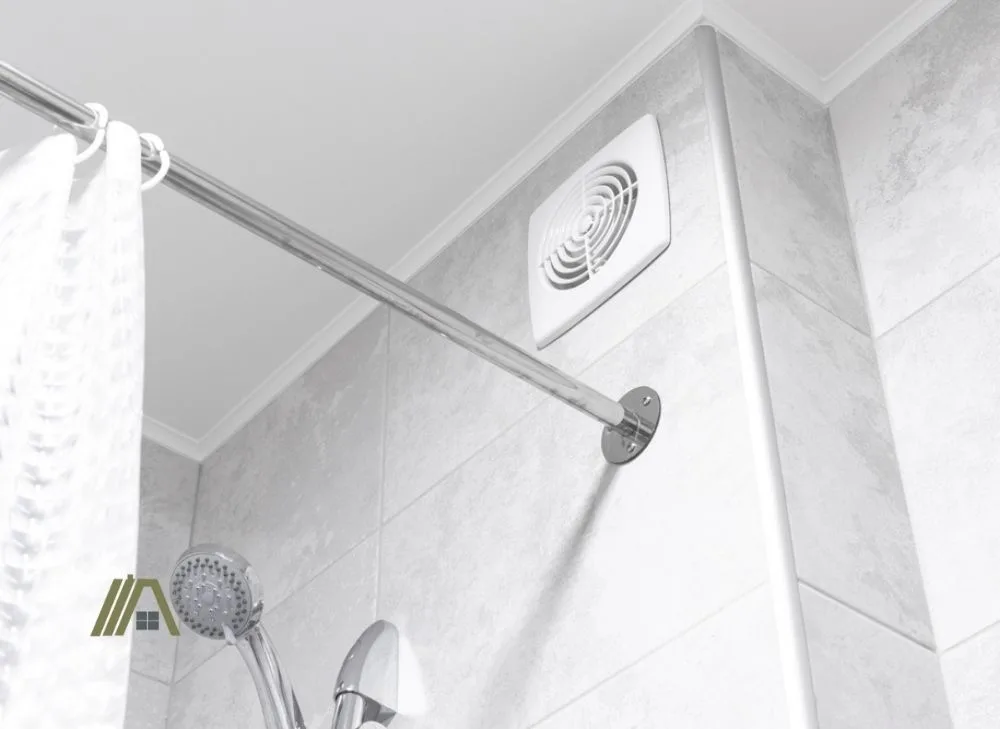Drywall is all around us (literally!). It is an inexpensive and simple solution to putting up walls, ceilings, or even decorative pieces in your home. One of the major limitations to this wonderful and versatile building material is that it is essentially hard paper. In terms of strength and water resistance, it can fall short.
Let’s look at why regular drywall is not a good option for your bathroom and what you can try instead.

Regular drywall can be used in the bathroom, i.e., in most states, there are no codes restricting this. But it is extremely vulnerable to water; even waterproofing doesn’t eliminate the risk of rot and mold. Rather use purple, green, or blue drywall, which are deisgned for use in wetter environments.
Regular Drywall Can’t Handle Bathroom Moisture
Drywall is often a cost-effective and easy replacement for wet materials like plaster and concrete. It is convenient and often easier to use, so it may seem like the perfect material to use in your home.

However, it is made of materials that are not waterproof and, as such, is a bad idea to use in areas where moisture is rife, like your bathroom.
Drywall is made primarily from a mineral called gypsum, which is ultimately a crystalized water substance, wedged between two pieces of heavy paper.
You know what happens to paper when it gets wet, which is one strike against drywall use in wet locations. But water also negatively affects gypsum, which turns into a soggy paste when exposed to moisture.
Even with the most powerful bathroom exhaust fan and the best supporting ventilation tactics, the walls, ceiling, and floor of a bathroom will be exposed to enough water that a non-waterproof material will shortly begin to break down.
I do need to note here that, you are not prohibited from using regular drywall in the bathroom by the building codes. There is actually very little regulating the waterproofing of wet areas like showers and bathrooms.
However, while it’s nice that you don’t have to jump through tricky hoops to get your bathroom installed, if you do the bare minimum here, you will regret it in a few years time when you are having to redo your bathroom.
Can You Waterproof Regular Drywall?
Can you waterproof regular drywall? Yes. Although some people have doubts, most waterproofing liquid membranes, such as RedGard, will adhere to this material with relative success.
However, will waterproofing a material like drywall be effective against bathroom-scale moisture levels? In the opinion of most professionals, the answer to that is no.
The reason for this answer is the risk of waterproofing failure. This is a risk no matter how high-quality the waterproofing is.
Now, if you have a moisture-resistant material underneath the waterproofing, then your home won’t likely suffer too badly in the time it takes you to repair the seal.
But in the case of drywall, the steam from one hot shower can set off a degradation process that cannot be stopped. The end result of this would be having to rip out and replace drywall in the bathroom, not to mention the mold and mildew issues that are likely to arise.
Can Any Drywall Be Used in Bathrooms?
While you cannot use regular drywall in a bathroom, there are other types of drywall that have been specifically designed for use in wet areas.
Purple Drywall
Purple drywall is your best option for drywall in a bathroom. It can cope really well with exposure to high moisture levels as well as direct contact with water. Not only does it effectively resist moisture penetration and damage, but it is also mold-resistant.
It is the most expensive of the options presented here.
Blue Board
Blue board is also called plasterboard, not because it’s made from plaster but because it is frequently used as a backing for plasterwork. The blue board name comes from its unmistakable color. It has both mold-and moisture-resistant properties, which makes it great for use in bathrooms.

There is a difference between being moisture-resistant and being waterproof. As such, you will still need to apply some kind of waterproofing to the blue board. Here is a video showing how to do this in a few easy steps (note the color of the drywall).
Green Board
Green board drywall, also known as MMR (Mold, Mildew, and Moisture Resistant) board, is a type of drywall specially designed to resist moisture due to its thick wax paper backing. It’s fairly inexpensive, retailing at around $0.38 per square foot and it is eco-friendly, being made of recycled paper.
Control Moisture in the Bathroom
Even if you have installed bathroom-friendly drywall, without the correct moisture control measures you may find yourself having to repair or replace your drywall sooner than you’d like.
The moisture from your daily scrub in your shower and bath permeates the surfaces of your bathroom and without a proper outlet for evaporation and airflow water damage becomes inevitable.

The best thing to do to ensure the longevity of your bathroom as a whole is to reduce bathroom moisture.
Using a ventilation system like an exhaust fan, ventilation fan, or high-quality dehumidifier can help with any condensation issues.
Moisture absorbers are also a cost-effective and convenient way to help control moisture in your bathroom.
If your bathroom fan is dripping, then it’s best to get this sorted asap.
Sources
https://www.americangypsum.com/
https://homeguides.sfgate.com/can-hang-drywall-bathroom-91705.html
https://www.custombuildingproducts.com/TDS/TDS-104.pdf
https://en.wikipedia.org/wiki/Drywall
https://www.familyhandyman.com/list/5-types-of-drywall-all-diyers-should-know-about/
